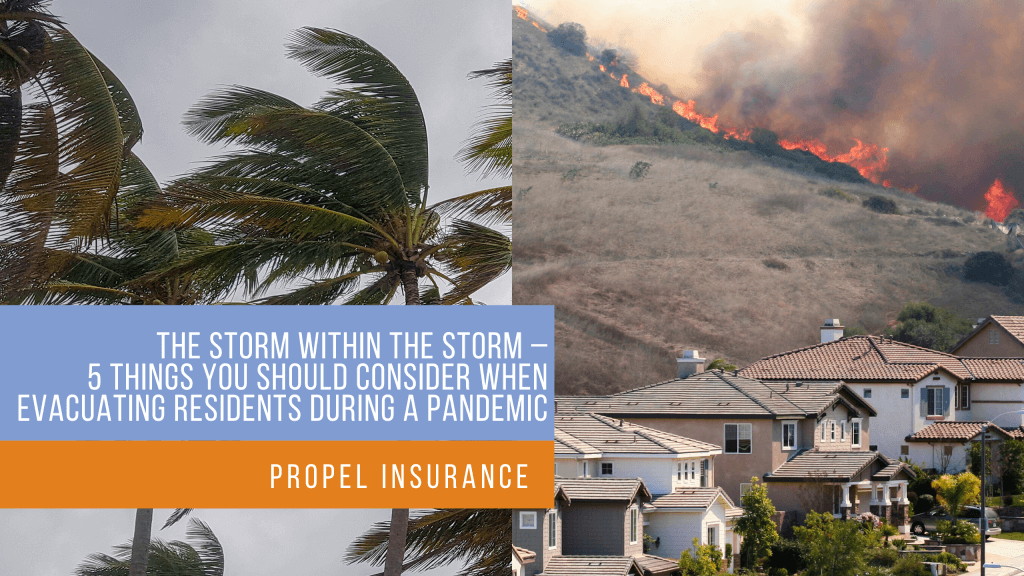Propel provides innovative insurance solutions to thousands of companies across the country. We make it our business to know your world inside and out.
Producer's Corner, Senior Care
The Storm Within The Storm – 5 Things You Should Consider When Evacuating Residents During A Pandemic
It may not seem fair, but unfortunately, hurricane season is not canceled this year. This is also true for other natural disasters, wildfires, power outages, etc. With the stress that COVID-19 has brought to operations and staffing, the thought of a natural disaster or wildfire definitely feels like it is piling on. COVID-19 is already straining the disaster management and health system resources. Hospitals are struggling to provide care due to limited resources and personnel. Could you imagine a storm with the impact of Hurricane Katrina during the COVID-19 crisis?
We are in unchartered waters, but based on our experience responding to disasters and living with the COVID-19 pandemic for the last three months, we would like to point out some areas that need to be addressed regarding your Emergency Plan. As we have found, an emergency does not provide full immunity from litigation or regulatory deficiencies. Communication from the states of Florida and Texas have instructed operators to consider needed changes to accommodate social distancing and maintain infection control measures during the evacuation and/or sheltering in place.
Concerning natural disasters, you should always be ready to do three things; shelter in place, evacuate, and receive residents. Each year we recommend that you perform a desk audit of your Comprehensive Emergency Plan (CEMP). It is best to do this at the start of the hurricane season if you are in a coastal state, when your approval is due for the local emergency management, and/or on the anniversary of the implementation of your plan. A lot has changed in the past three months, including your CEMP. You need to contemplate how having COVID-19 residents will affect each component of your plan.
Memorandum of Understandings (MOU)
Let’s start by considering your Memorandum of Understanding (MOUs). Check to make sure that your suppliers and evacuation partners are still in business and have the resources to respond as needed, including transportation, water, food, medication, etc. You will need to add an adequate amount of PPE, cleaning, and hand sanitizing supplies to your plan. Additionally, you will need to confirm that you have a receiving community that is willing to take in COVID-19 positive residents.
Sheltering in Place
In preparation, review your Emergency Power Plan, test your generators, check fuel, and other supplies to set up your cooling areas. You should also address the possibility that you could have COVID-19 positive residents and need to set up some separate areas or separate your cooling area into sections. You should also consider keeping your residents that cannot follow social distancing protocol separate from the other residents. Any segregation will require multiple cooling areas with different staff, portable generators, and air conditioning units for each cooling area.
Evacuation
Traditional models on when to order evacuations vs. sheltering in place will be reassessed, considering the challenges with COVID-19. Also, COVID-19 positive residents should not be transported with non-COVID residents.
If you are not planning to evacuate to a sister community, you should check periodically to ensure that any receiving communities will still accept your residents on a short or long-term basis. Since the status of a receiving community may change without notice, you should have arrangements with a backup community or hotel. You may also consider sending your COVID-19 positive residents to a separate community. Assume that there will be limited hotel options and make arrangements in advance. Additionally, make sure your information is updated on any state database and monitor the database to find available vacancies.
You should also communicate your wishes with any community that you have promised to receive their residents. If it is a reciprocal agreement, are you ready and willing to receive their residents? You may also want to ask for a confirmation from their corporate office that they are allowed to receive residents.
Jointly occupying a community will also require some considerations. If the community does not want to intermingle residents, do they have the space to create a separate housing and/or isolation area for your residents? It is essential to also confirm that the receiving community’s Emergency Power Plan covers cooling areas (generator supported) large enough for all residents, staff, and isolated residents (if needed).
During the evacuation, residents will need to wear masks, the bus/van will need to be cleaned periodically, and monitoring for symptoms will continue. You will need PPE for the evacuation and at least a 2-week supply in stock while being displaced. You may also need to separate COVID-19 positive residents from the general population in separate vehicles or provide full PPE for all residents. The local emergency management should be contacted to see if positive residents can be sent to the hospitals. If you are evacuating COVID-19 positive residents, you need to make sure that the receiving community also has the proper PPE for droplet precautions to receive them.
Receiving Residents
You need to communicate with the evacuating company as to whether you will accept COVID-19 positive residents. If not, they will need to make other arrangements.
It is advised to create a separate area for the incoming residents that is staffed separately. It is generally best for the evacuating community’s staff to care for their residents. You should also be prepared to isolate staff within or separate from the receiving area. Also suggested is to confirm that the evacuating community has an adequate amount of staff and PPE for a reasonable anticipated length of stay. Also, request that they bring the supplies needed to create an isolation area, including the plastic sheets with zippers, pedal trash cans, thermometers, biohazard bags, hospital-grade cleaner, etc.
Staffing
If you have not done so already, please have staff sign off who is available to shelter in place and/or evacuate with residents. The staff answer may have changed due to the pandemic. You should also consider if they have dependents that need to travel with them that could be exposed to the COVID-19 virus.
Please continue to monitor the FEMA, CDC, CMS, and your state/local agency websites for guidance. We are here to help and will provide pertinent follow-up information as needed. Any questions, comments, or further discussion on the topic or your specific Emergency Plan, can be directed to Jay Stowers, Senior Care Risk Consultant, at 214-287-9827.


